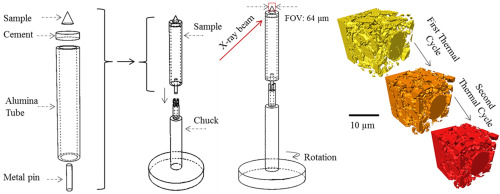Nano Energy ( IF 17.6 ) Pub Date : 2018-03-05 , DOI: 10.1016/j.nanoen.2018.03.002 Xu Zhao , Wei Cai , Ying Yang , Xuedan Song , Zachary Neale , Hong-En Wang , Jiehe Sui , Guozhong Cao

|
Two-dimensional (2D) MoSe2/graphene nanocomposites show great potential as anode materials for sodium ion batteries (SIBs). In this work, we report the controlled growth of oriented, interlayer-expanded MoSe2 nanosheets on graphene with Mo–C bonding via a surfactant-directed hydrothermal reaction. The resulting 2D nanocomposite with strong electronic coupling facilitates both electron and Na-ion transfer across the interface and reversible insertion/extraction of Na-ion, enabling fast pseudocapacitive Na-ion storage with reduced voltage hysteresis and excellent durability over 1500 cycles. Density Functional Theory (DFT) calculation demonstrated MoSe2/graphene established a charge accumulation at the interface and promoted sodium-ion transport through the interface. Such outstanding Na-ion storage capability propels their potential application in sodium-ion capacitors (SICs). As a proof-of-concept, a model hybrid SIC was demonstrated by assembling with MoSe2/graphene composite as anode and activated carbon as cathode, delivering an impressive energy density of 82 W h kg−1 and power output of 10,752 W kg−1 within a voltage window of 0.5–3 V. The SIC also delivered a superior rate capability (66% capacitance retention after increasing the current density from 0.1 to 25.6 A g−1) and cyclability (81% capacitance retention over 5000 cycles at 5 A g−1), which shows promise for bridging the performance gap between conventional batteries and supercapacitors. The proposed strategy based on hierarchical hybridization combined with chemical bonding and interlayer engineering may hold great promise for developing advanced electrode materials for next-generation clean energy systems.
中文翻译:

垂直生长在石墨烯上的具有Mo–C键的MoSe 2纳米片,用于钠离子电容器
二维(2D)MoSe 2 /石墨烯纳米复合材料显示出巨大的潜力,可作为钠离子电池(SIB)的负极材料。在这项工作中,我们报告了通过表面活性剂定向的水热反应,通过Mo–C键在石墨烯上定向生长,层间扩展的MoSe 2纳米片的受控生长。所得的具有强电子耦合性的2D纳米复合材料可促进电子和Na离子在界面上的转移以及Na离子的可逆插入/提取,从而实现快速假电容Na离子存储,并具有降低的电压滞后性以及在1500次循环中具有出色的耐久性。密度泛函理论(DFT)计算证明了MoSe 2graph /石墨烯在界面处建立了电荷积累,并促进了钠离子通过界面的传输。如此出色的Na离子存储能力推动了其在钠离子电容器(SIC)中的潜在应用。作为验证的概念,模型混合SIC通过用摩西组装证明2 /石墨烯复合物作为阳极和活性炭作为阴极,提供的82 W时kg的令人印象深刻的能量密度-1的和功率输出10,752公斤w ^ - 1在0.5–3 V的电压窗口内。SIC还具有出色的速率能力(将电流密度从0.1 A g -1增加到25.6 A g -1后保持66%的电容)和可循环性(在5个5000次循环中保持81%的电容) A g -1),这有望弥合传统电池和超级电容器之间的性能差距。基于分层杂交,化学键合和层间工程相结合的拟议策略可能为开发用于下一代清洁能源系统的先进电极材料具有广阔的前景。


























 京公网安备 11010802027423号
京公网安备 11010802027423号